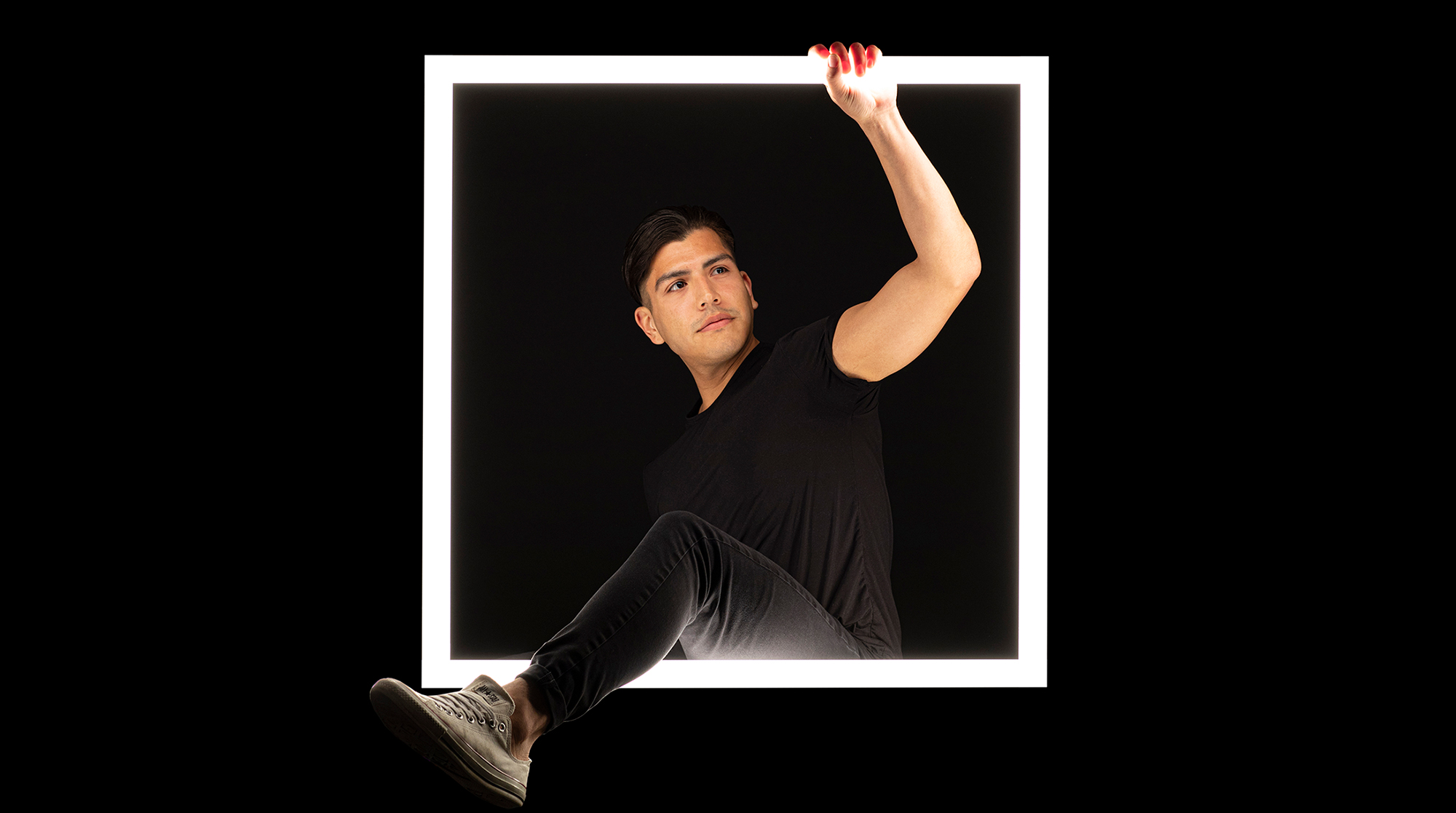

In 2005, a small room at the end of a dim corridor in Schmitz Hall made a big difference. Known as the Q Center, it was home to a student-run effort to cultivate safety and respect for LGBTQ+ people at the UW. The space wasn’t much, but it meant everything to the students and staff who had fought for years for it to become a reality.
At the tail end of the ’90s, a decade that had brought the federal Defense of Marriage Act and several homophobic incidents on the UW campus, a group of undergraduates pressured the University to provide more safe spaces for queer students. Eventually a task force was formed to help improve the climate for the UW’s queer community—and the University gave the Q Center a home.
Today, the center has a colorful space in the HUB, alongside other student organizations and meeting rooms.* Its walls are covered in artwork by queer artists. Students browse the bookshelves and gather on comfortable couches. They sit, talk, laugh and cry. Jen Self (pronouns: they/them), ’10, the center’s founding director, says that one thing hasn’t changed: There is no Q Center without a dedication to racial justice.
“We can’t begin to think about gender and sexuality without considering how intersectional oppression multiplies the barriers for marginalized communities,” says Self.
Val Schweigert, ’18, the center’s education coordinator and graduate student staff assistant, agrees. “We are not ‘just’ an LGBTQ space,” she says. “We’re about gender, sexuality—and racial justice. All of those are inherently linked.”
Since the Q Center opened, its students have collaborated with those from the Samuel E. Kelly Ethnic Cultural Center (ECC). The two organizations are natural allies.
“We have so many different view-points—religion, culture, ways people have grown up. And that’s why we value the work of the Q Center,” says Cicero Delfin, ECC assistant director. “Like them, we’re focused on providing a space and programming that’s inclusive.”
Their students know, too, that the work of justice doesn’t end at the doors of the Q Center or the ECC: It extends into the campus community and beyond.
Take Lavish, a multi-art showcase highlighting the experiences of queer and trans people of color (QTPOC)— it represents 10 years of collaboration between the Q Center and the ECC. Through music, poetry, dance and visual art, students explore their lives and struggles as members of multiple marginalized communities.
Among the Q Center’s many roles, it mentors and supports students, helping them become leaders who can take charge of projects and policies they believe in.

Jaimée Marsh, left, and Jen Self were crucial in shaping the Center.
Jaimée Marsh, ’09, who was the Q Center’s associate director for six years, recalls how she worked to draw out students’ potential and help them find their voices.
“Our students’ experiences always shaped the programming of the Q Center,” Marsh says. “By leading programs they co-design and are passionate about, students get great professional development. The job of staff is to support them—to help them create their vision in the most successful way.”
Marsh found her home at the Q Center as a UW undergraduate and honed her leadership skills as the center’s associate director. Today, she’s executive director of the nonprofit FEEST Seattle.
Countless Q Center and ECC leaders have made a powerful impact on the UW by collaborating across the University. In 2006, Q Center students worked with a wide variety of communities—including students with disabilities and Muslim students—to make the case for gender-neutral bathrooms.
Unisex bathrooms would welcome people of any gender identity, offer greater privacy with single stalls and be more accessible for people with disabilities. The students called the project “Free to Pee.”
“These students just kept on it,” says Self. In 2011, the Q Center and the Office of Student Life secured a commitment from the UW to begin renovating bathrooms.
Self (who will be moving on from her director role this summer) is proud of what the students of the Q Center have accomplished over 16 years, but there’s still a lot of work to do. “I want people on campus to see our students—see who they are. They are accomplished leaders, thinkers and innovators in their own right.”
* At the time of this writing, the Center and HUB are closed in response to the COVID-19 pandemic; the Q Center continues to provide remote resources, events and support: uw.edu/q-center.
1999: UW student leaders send letter to UW President Richard McCormick about supporting LGBTQ students; task force is formed
2001: Task force recommendations include establishing on-campus resource center for queer students
2005: Q Center opens in Schmitz Hall
2011: After years of advocacy by Q Center students and allies, UW funds gender-neutral bathrooms across campus
2013: Mental-health services for transgender students established in collaboration with Hall Health and UW Counseling Center
2018: Students and employees allowed to include preferred name on Husky Cards and change name and gender in UW databases
2019: BestColleges names UW the #1 school in U.S. for LGBTQ students
Communications Major, Informatics Minor, ’20
“For me, the Q center means comfort. Being a mixed-race person of color and also a gay man, I find a lot of circles hard to navigate. Many of them are exclusive to certain identities—so I don’t feel comfortable in the full experience of ‘me.’
“My favorite thing about the center is the friendships I’ve made. I have some of the dumbest conversations in here, and I’ve never once thought they were counterproductive. I’d rather have a casual and meaningful conversation in the Q Center than a more intellectually stimulating one outside.
“I want people to know: As much as others find comfort and solace in environments where I don’t—like a football game, for example—that camaraderie, that comfort and sense of belonging, we’re getting that here. It just looks different.”